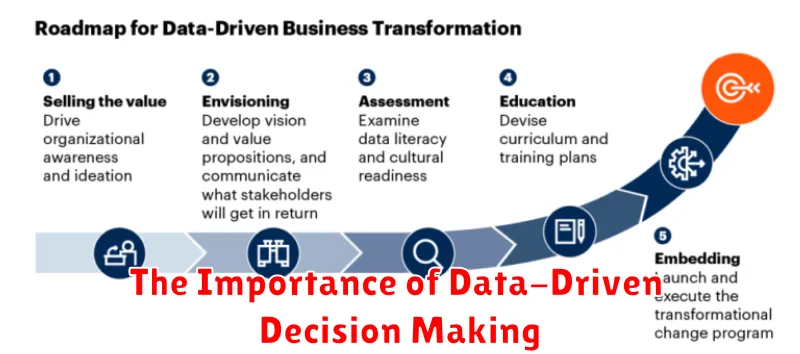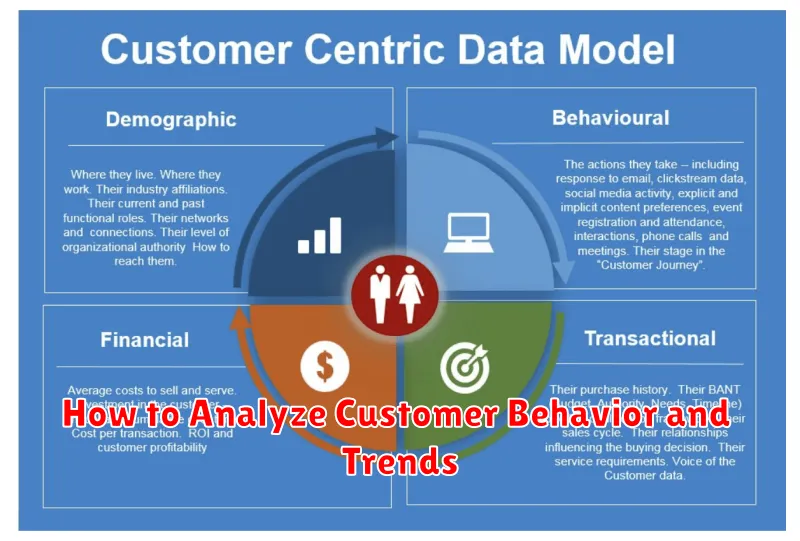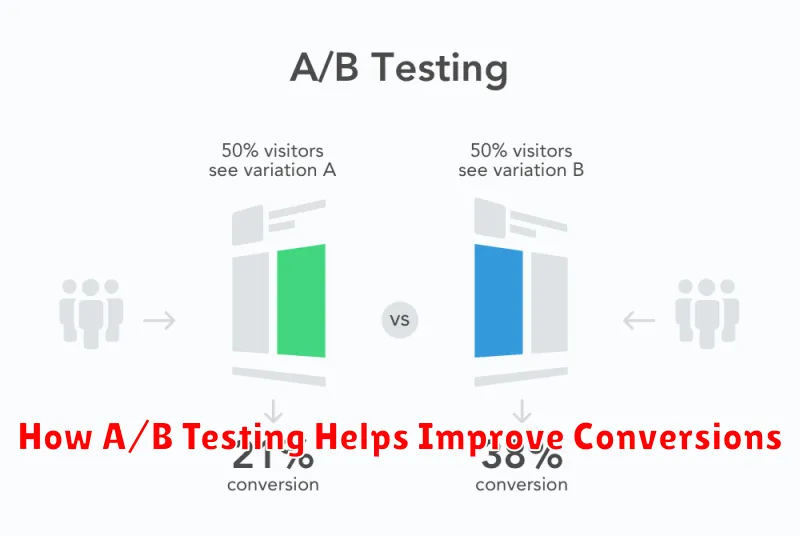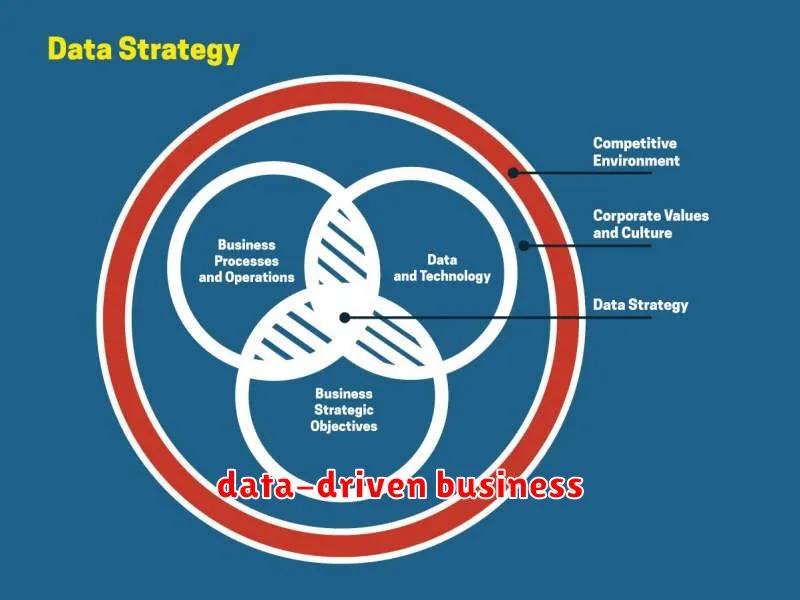In today’s competitive digital landscape, leveraging data analytics is no longer optional but essential for the success of any online business. This comprehensive guide will show you how to harness the power of data analysis to gain valuable insights into your customers, optimize your marketing campaigns, and ultimately improve your bottom line. Learn how to effectively use web analytics, e-commerce data, and social media metrics to make data-driven decisions that will propel your online business to new heights of growth and profitability.
The Importance of Data-Driven Decision Making

In today’s competitive online landscape, relying on gut feeling alone is a recipe for failure. Data-driven decision-making is crucial for sustained online business success. It allows for informed choices, minimizing risk and maximizing opportunities.
Data analytics provides valuable insights into customer behavior, marketing campaign effectiveness, and website performance. By analyzing this data, businesses can identify key performance indicators (KPIs), understand what’s working and what isn’t, and make necessary adjustments to their strategies.
A data-driven approach fosters a culture of continuous improvement. Instead of reacting to problems, businesses can proactively address potential issues and capitalize on emerging trends. This leads to increased efficiency, higher conversion rates, and ultimately, greater profitability.
Ultimately, the importance of data-driven decision-making lies in its ability to transform guesswork into evidence-based strategies. It empowers businesses to make smarter, more effective choices, leading to significant improvements in their bottom line.
How to Set Up Google Analytics for Your E-commerce Store
Setting up Google Analytics (GA4) for your e-commerce store provides crucial data for informed decision-making. First, create a Google Analytics account if you don’t already have one. Then, access your Google Analytics property and add your e-commerce website. You’ll need to paste the tracking ID (measurement ID) provided by GA4 into your website’s header.
Next, configure e-commerce tracking within GA4. This involves setting up enhanced e-commerce tracking which automatically tracks key metrics like add to cart, checkout, and purchase events. Ensure accurate tracking by properly tagging your website’s transactions. Customize your reports to focus on key performance indicators (KPIs) relevant to your business, such as conversion rate, average order value, and customer acquisition cost.
Regularly monitor your data in GA4’s reports to identify trends and areas for improvement. Analyze customer behavior, pinpoint website bottlenecks, and measure the effectiveness of your marketing campaigns. Use this information to optimize your website, marketing strategies, and overall business performance. Remember to explore GA4’s advanced features, such as audience segmentation and custom reports, to gain deeper insights into your e-commerce business.
Key Metrics to Track for Business Growth
Tracking the right key performance indicators (KPIs) is crucial for online business growth. Focusing on a few vital metrics allows for efficient analysis and informed decision-making. Prioritize metrics directly impacting your bottom line and overall business objectives.
Website traffic (unique visitors, page views, bounce rate) provides insights into audience engagement and website effectiveness. Analyzing conversion rates (e.g., from visitors to leads, leads to customers) reveals the success of your marketing and sales funnels. Monitoring customer acquisition cost (CAC) and customer lifetime value (CLTV) is essential for assessing the profitability of your marketing efforts and customer relationships.
Furthermore, revenue growth and profit margins offer a clear picture of your financial health. Return on investment (ROI) for various marketing campaigns demonstrates campaign effectiveness. Finally, tracking customer satisfaction (CSAT) and Net Promoter Score (NPS) provides valuable feedback on customer experience, which is critical for long-term growth and retention.
By regularly reviewing and analyzing these key metrics, you can identify areas for improvement, optimize your strategies, and ultimately drive significant business growth.
How to Analyze Customer Behavior and Trends

Analyzing customer behavior and trends is crucial for online business success. Data analytics provides the tools to understand your audience’s actions and preferences.
Begin by collecting relevant data. This includes website analytics (traffic sources, bounce rates, time on site), sales data (purchase history, average order value), and customer relationship management (CRM) data (interactions, demographics). Social media analytics can also offer valuable insights into customer sentiment and engagement.
Next, organize and interpret this data. Look for patterns and trends. For example, identify peak purchasing times, popular product categories, and customer demographics most likely to convert. Visualization tools, such as charts and graphs, can make identifying trends easier.
Finally, use your findings to inform business decisions. Tailor your marketing campaigns to resonate with specific customer segments. Optimize your website based on user behavior. Develop new products or services that meet unmet customer needs. Regularly monitor and analyze data to stay ahead of evolving customer preferences.
Using Heatmaps to Optimize Website Performance
Heatmaps are a powerful data visualization tool that provides insights into user behavior on your website. By tracking mouse movements, clicks, and scrolls, heatmaps reveal which areas of your website attract the most (or least) attention. This information is invaluable for optimizing website performance.
Understanding where users are focusing allows you to improve user experience (UX). For example, if a crucial call-to-action button receives little interaction, a heatmap would highlight this issue, suggesting a redesign or repositioning for better visibility.
Heatmaps also help identify conversion bottlenecks. By analyzing user journeys, you can pinpoint areas where users are abandoning the process. This could indicate confusing navigation, lengthy forms, or other usability problems needing attention.
Using heatmap data, you can make data-driven decisions to improve website design and content. This includes strategically placing key elements, optimizing page layouts, and improving overall website usability to drive higher conversion rates and a better user experience.
In short, heatmaps offer a visual representation of user interactions, allowing for targeted improvements that directly impact your online business’s performance and return on investment (ROI).
How A/B Testing Helps Improve Conversions

A/B testing, also known as split testing, is a crucial data-driven method for optimizing your online business. It involves presenting two versions (A and B) of a webpage or element – such as a headline, button, or image – to different segments of your audience. By tracking key metrics like conversion rates, click-through rates, and time on page, you can determine which version performs better.
This allows for data-backed decisions, eliminating guesswork. For instance, you might test two different call-to-action buttons; one using a compelling phrase and the other a more direct approach. A/B testing reveals which button leads to a higher conversion rate, indicating a more effective approach for encouraging desired actions.
The insights gained from A/B testing directly contribute to improved conversions. By iteratively testing different variations, you can gradually refine your website or marketing materials, maximizing their effectiveness in guiding users towards your desired outcome – be it a purchase, signup, or other conversion goal. This continuous improvement process significantly enhances your online business’s performance and ROI.
In essence, A/B testing provides a scientific approach to optimization, helping you understand what resonates with your audience and ultimately driving higher conversion rates and increased profitability.
Automating Data Collection and Reporting
Automating data collection and reporting is crucial for efficient online business management. Manual processes are time-consuming and prone to errors. Automation streamlines this by using tools to automatically gather data from various sources, such as website analytics platforms, CRM systems, and marketing automation tools.
This automated data can then be fed into reporting dashboards, providing real-time insights into key performance indicators (KPIs). These dashboards can be customized to display the most relevant metrics for your business, allowing for quicker decision-making.
Several tools facilitate automation. Data integration platforms connect disparate data sources, while business intelligence (BI) software enables the creation of automated reports and visualizations. Custom scripting can be used for more complex automation needs. Choosing the right tools depends on your specific needs and technical capabilities.
The benefits of automation extend beyond efficiency. Automated reporting ensures consistent data quality, minimizing human error. It also allows for more frequent reporting, enabling quicker identification of trends and potential issues. This ultimately leads to more informed strategic decisions and improved online business performance.
How to Make Strategic Business Decisions with Analytics
Data analytics empowers businesses to move beyond gut feelings and make strategic decisions grounded in factual insights. By analyzing key performance indicators (KPIs) such as website traffic, conversion rates, customer acquisition costs, and customer lifetime value, businesses gain a clear understanding of their strengths and weaknesses.
This data-driven approach allows for the identification of trends and patterns, revealing opportunities for improvement and areas needing immediate attention. For example, analyzing website traffic data can pinpoint underperforming pages, enabling targeted optimization efforts. Similarly, studying customer acquisition cost data helps determine the most effective marketing channels, optimizing resource allocation for maximum return on investment (ROI).
Furthermore, predictive analytics leverages historical data to forecast future trends. This allows businesses to proactively adjust strategies, mitigating potential risks and maximizing opportunities. For instance, predicting seasonal sales fluctuations enables businesses to optimize inventory management and staffing levels, leading to improved efficiency and profitability.
In essence, leveraging data analytics for strategic decision-making leads to improved efficiency, enhanced customer experience, increased revenue, and a competitive advantage in the dynamic online marketplace. The ability to measure, analyze, and act upon data transforms business from reactive to proactive.

